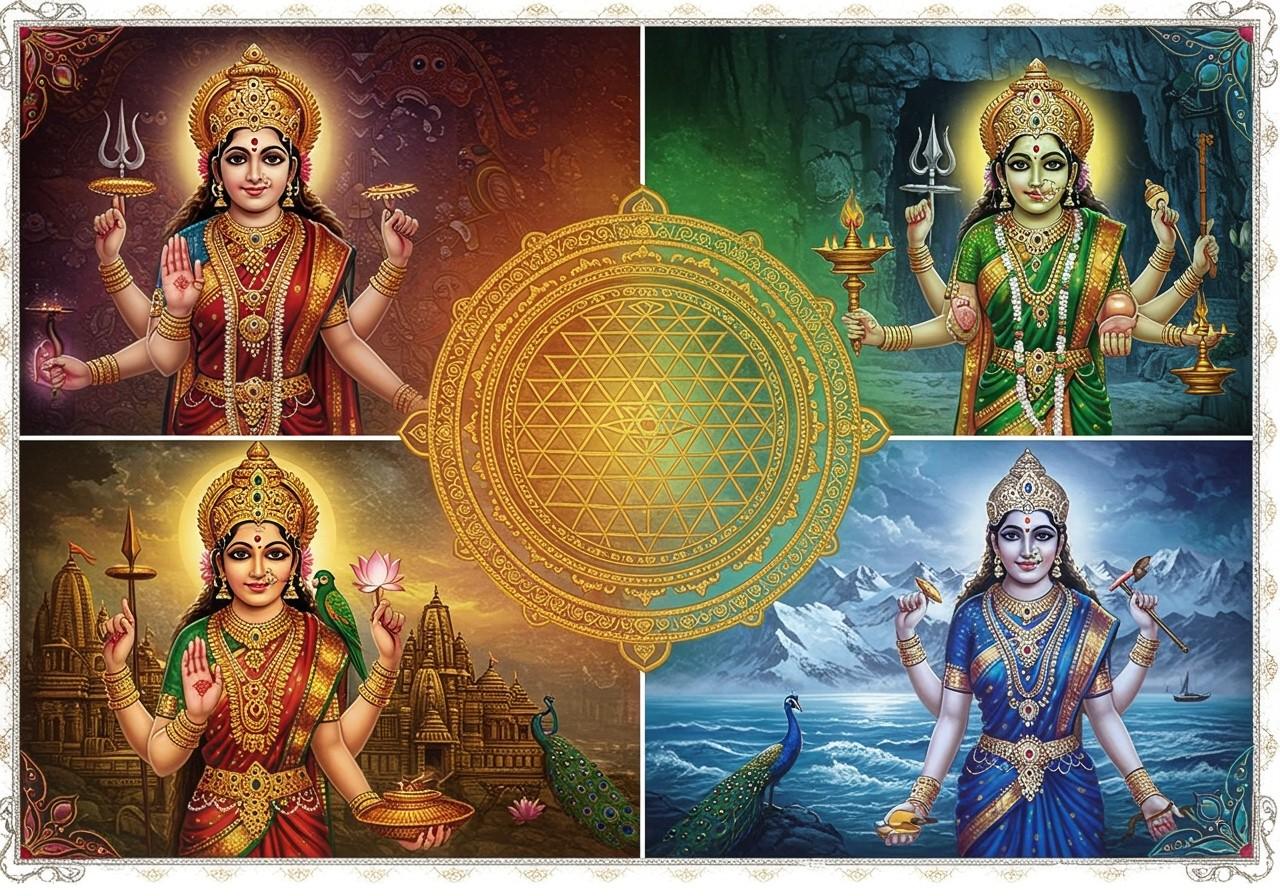
Shaktism, a prominent Hindu tradition, reveres the divine feminine power, Shakti. This blog delves into the regional expressions of Shaktism across India, highlighting unique practices and beliefs. Understanding these variations enriches our appreciation of India’s diverse spiritual heritage.
Historical Overview of Shaktism
Shaktism’s roots trace back to ancient India, evolving over centuries. Influential figures and texts, such as the Devi Mahatmya, have shaped its development. As Shaktism spread, it adapted to local customs, leaving its mark on art, literature, and temple architecture.
Regional Variations of Shaktism
Shaktism in Assam
Assam’s unique Shakti tradition centers around the Kamakhya Temple in Guwahati, a revered Shakti Peetha. The Ambubachi Mela is a significant ritual, reflecting distinct local beliefs. Shaktism’s influence permeates Assamese culture, enriching dance, music, and folklore.
Shaktism in Tamil Nadu
Tamil Nadu boasts a rich Shakti heritage. Temples like the Meenakshi Amman Temple in Madurai hold deep significance, with distinctive rituals like the Chithirai Festival. Local myths and legends add layers of meaning to Shakti worship, influencing Tamil culture, including Bharatanatyam and Carnatic music. As mentioned in recent studies, goddesses like Meenakshi are deeply rooted in local myths and legends, showcasing the unique cultural influences in the region.
Shaktism in West Bengal
West Bengal is known for its fervent Shakti devotion, particularly to Goddess Durga. Durga Puja is a major festival, celebrated with immense zeal. Iconic temples like the Dakshineswar Kali Temple serve as focal points for worship. Unique local customs shape Shakti traditions, influencing Bengali literature, art, and cinema. As highlighted in current research, Shakti is primarily worshipped as Durga and Kali in North India, with major celebrations during Navaratri and Durga Puja.
Shaktism in Maharashtra
Maharashtra’s unique Shakti practices revolve around temples like the Tulja Bhavani Temple. Festivals like Navratri hold special importance. Local beliefs and legends enhance Shakti worship, impacting Maharashtrian society through folk arts and traditions.
Shaktism in Himachal Pradesh
Himachal Pradesh’s vibrant Shakti traditions are evident at the Naina Devi Temple. Unique rituals and myths associated with these temples shape Himachali society, influencing folk dance and music.
Shaktism in Kerala
Kerala’s Shakti worship is deeply intertwined with the Theyyam ritual dance, where performers embody various goddesses and deities. The Attukal Pongala festival is a significant event, attracting millions of women devotees. These unique traditions showcase the diversity of Shakti worship in Kerala.
Modern Shaktism and Online Resources
Shaktism thrives in contemporary times, adapting traditional practices to modern life. Poojn.in offers a convenient way to acquire authentic ritual items, supporting the continuation of these sacred traditions.
How Poojn.in Supports Regional Shakti Practices
Poojn.in offers a wide selection of items for Shakti worship across India’s diverse regions:
-
North India: We provide complete puja thalis for Durga and Kali worship, including pure copper and brass items that adhere to traditional standards. Explore our collection of incense sticks and camphor tablets to enhance your puja experience. We also offer a variety of Laddu Gopal murtis for devotees.
-
South India: We offer authentic kumkum, turmeric, and other specialized puja items used in temples and homes, sourced responsibly and adhering to Agamic traditions.
-
West Bengal: Find traditional dhunuchi (incense burners), brass lamps, and other ritual items specific to Bengali customs for Kali Puja and Durga Puja. Check out our large candles ideal for puja ceremonies. We also offer ghee, an essential ingredient for havans during pujas.
-
Western India: Discover items for Amba Mata worship and Navratri celebrations, including garba decorations and specialized puja thalis tailored to regional preferences.
Visit www.poojn.in to explore our complete collection. Our customer service team can assist you in selecting the appropriate items based on your regional traditions.
Conclusion
The regional variations of Shaktism showcase the richness and diversity of India’s spiritual tapestry. Each state contributes unique practices and beliefs, enriching the broader tradition of Shakti worship. Understanding these differences fosters respect for tradition and culture. Today, Shaktism continues to flourish, embracing modern conveniences like online shopping to access authentic ritual items, ensuring the divine feminine power remains vibrant and accessible in our lives.


